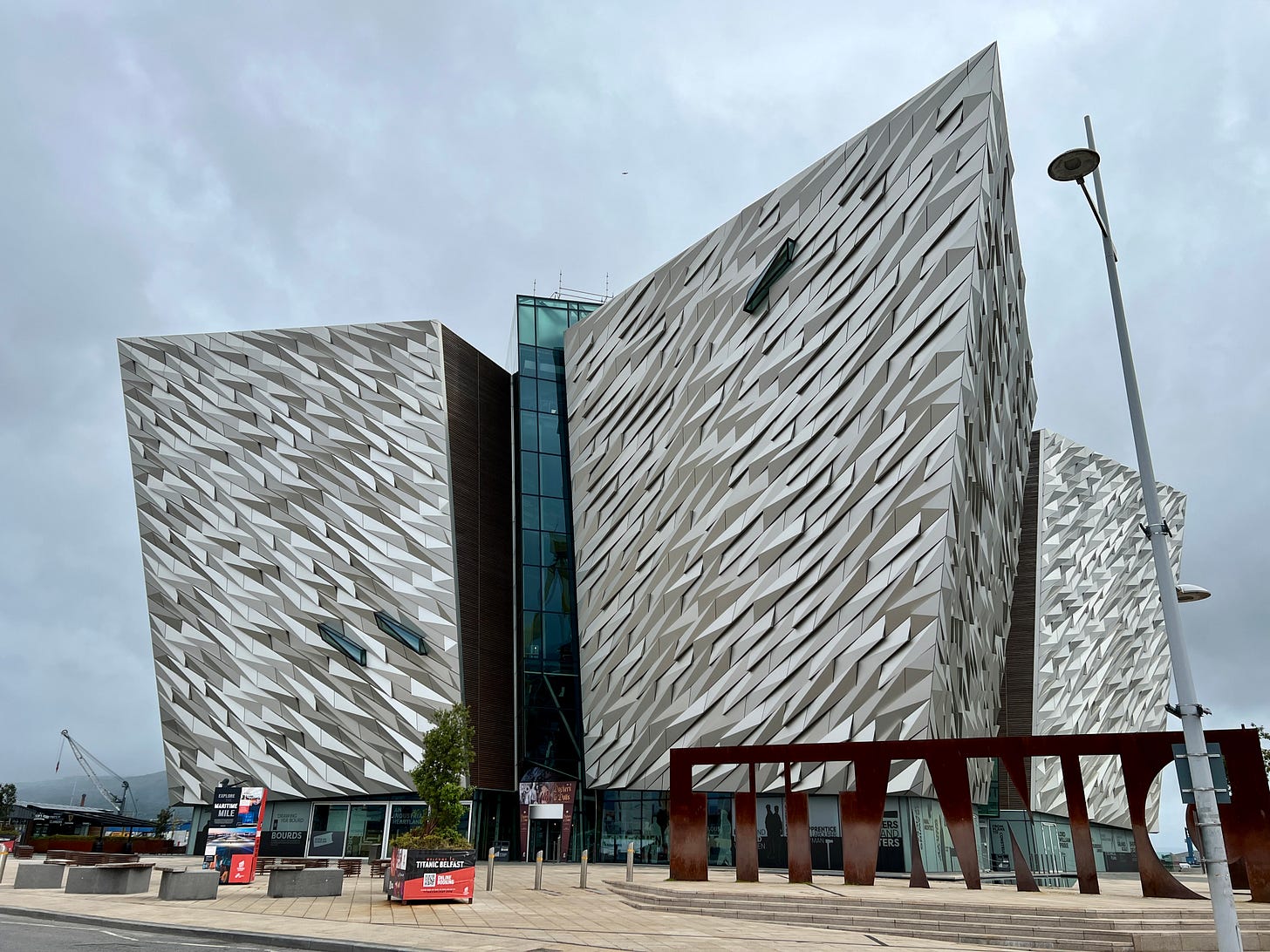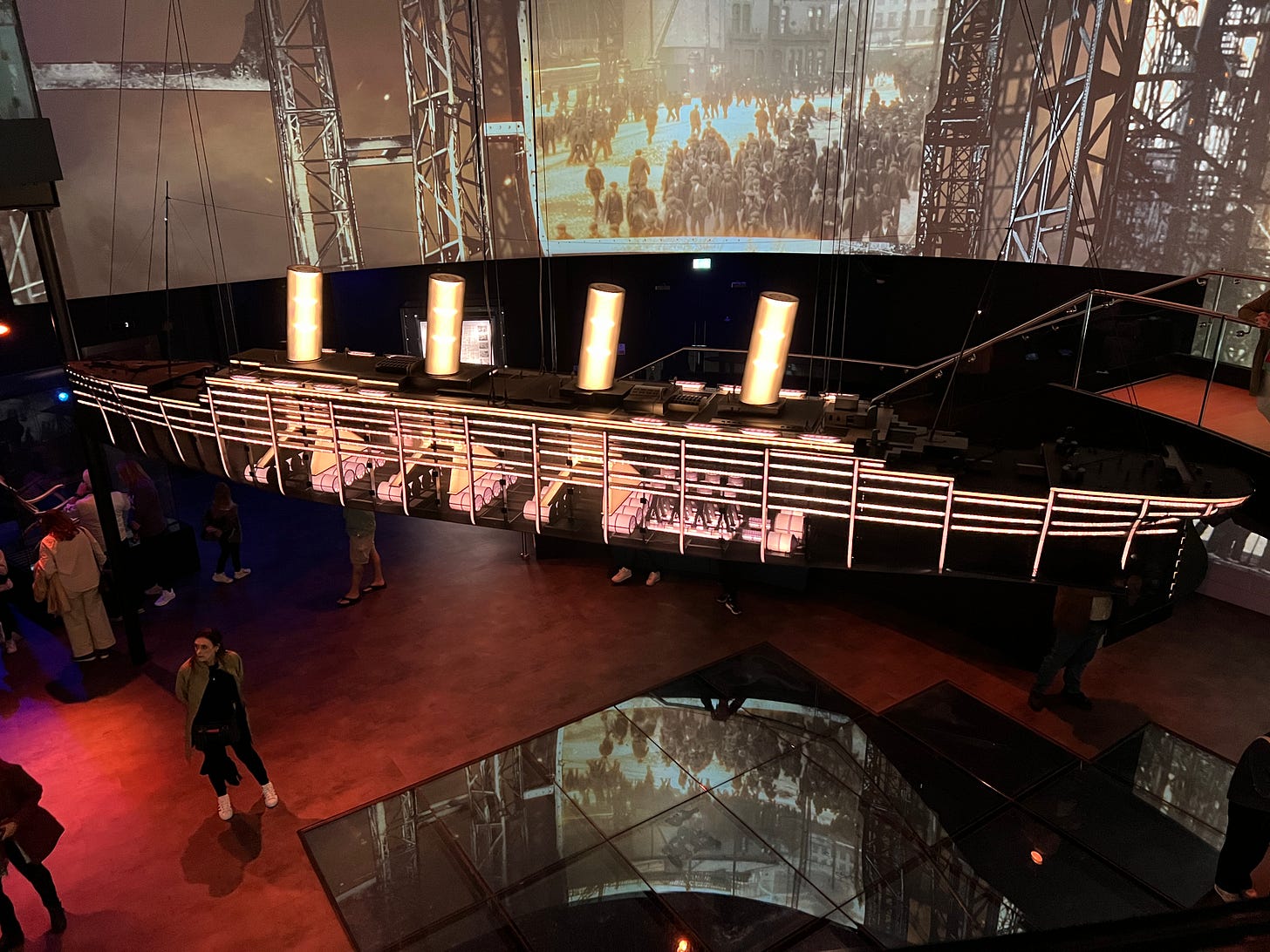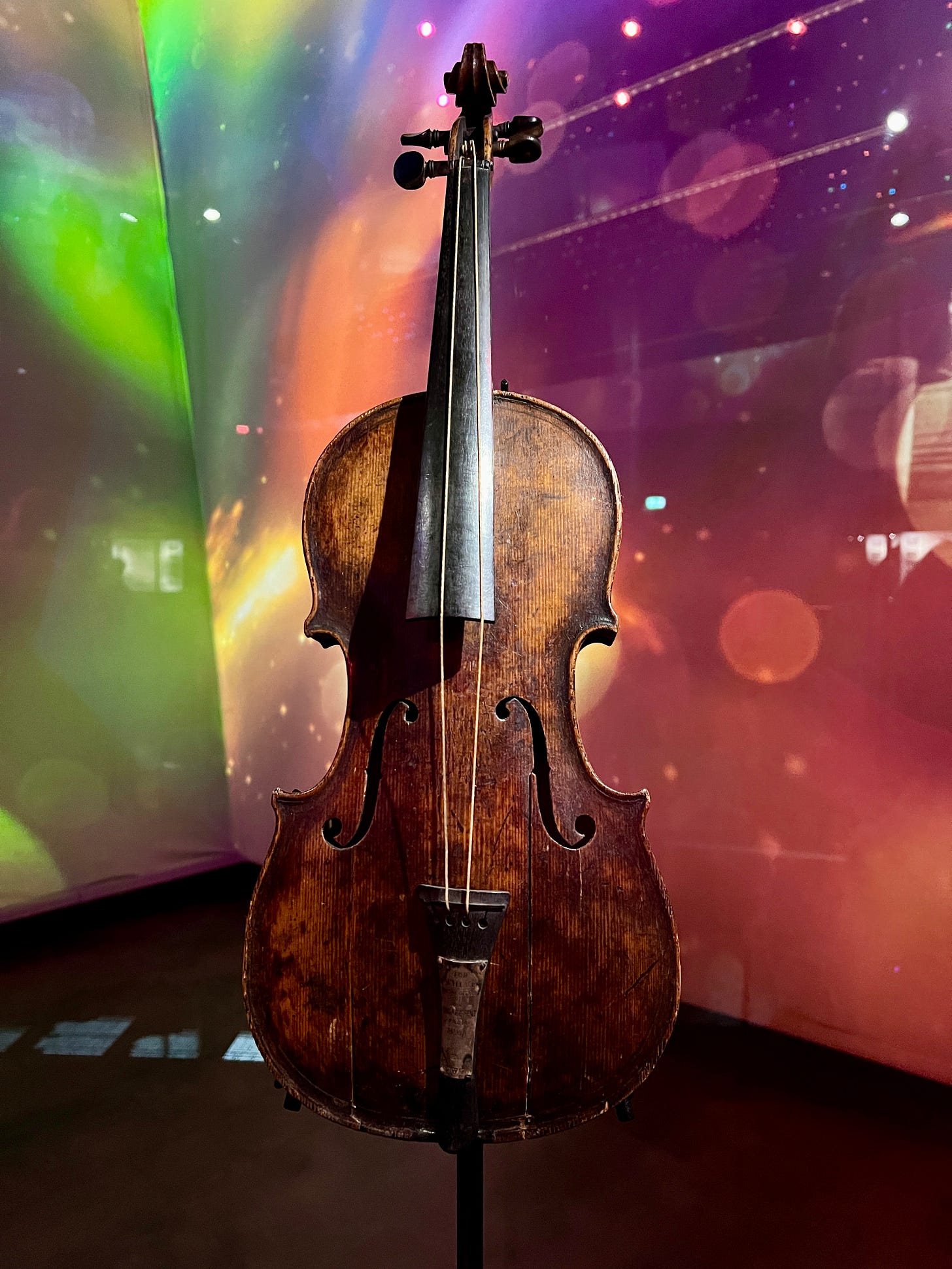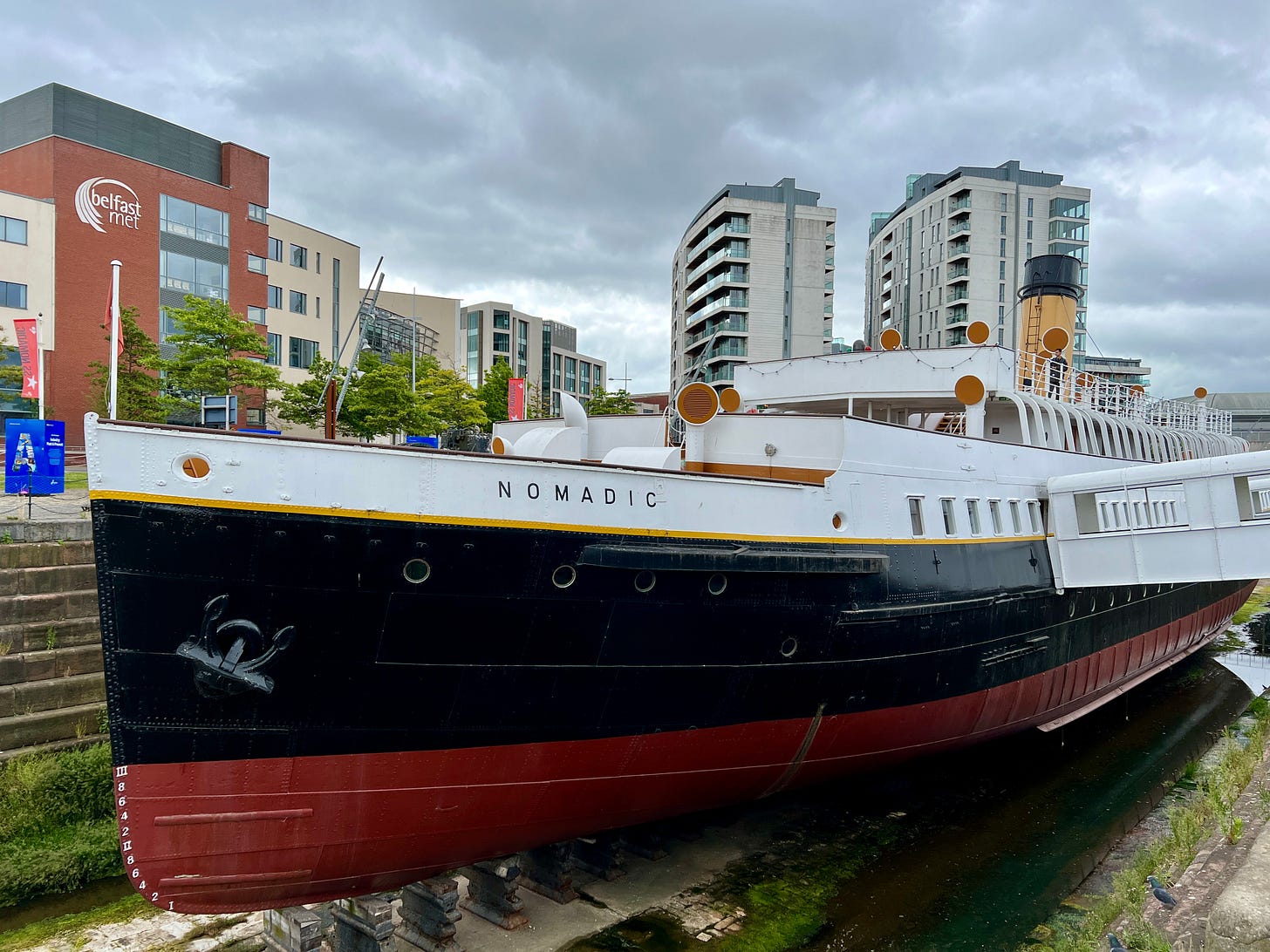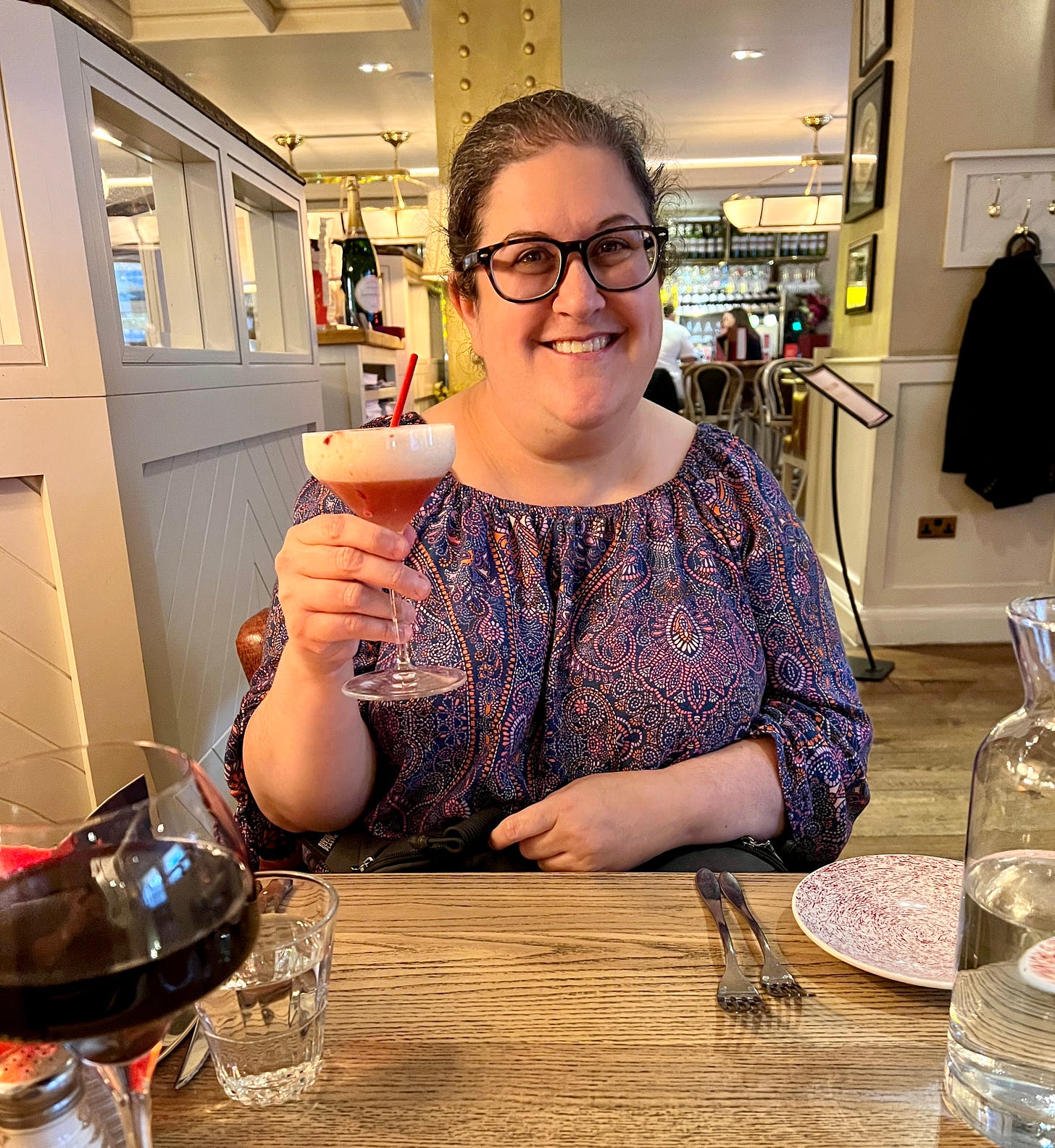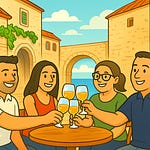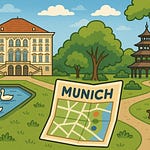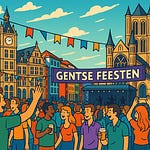Both: Hey everyone!
Jen: It's Jen and Greg with an update on our travels.
Greg: This update is going to be the first part of our time in Ireland.
Jen: We had to do a two-parter on this one because we didn't realize how eventful our time in Ireland actually was. It was really enjoyable. Like, I was pleasantly surprised with how much fun we had in Belfast.
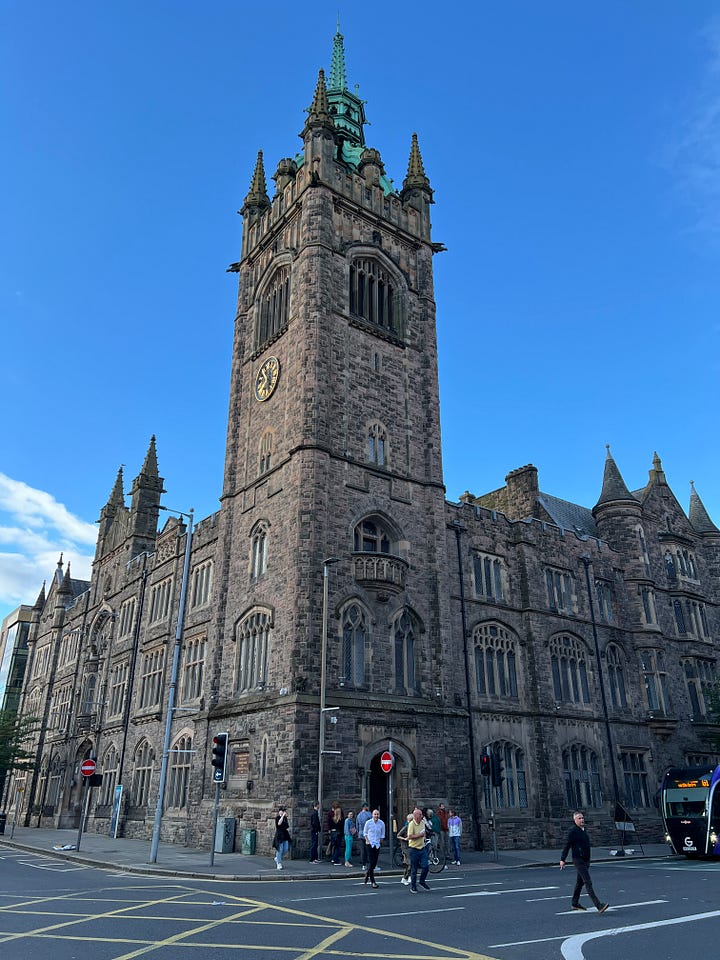
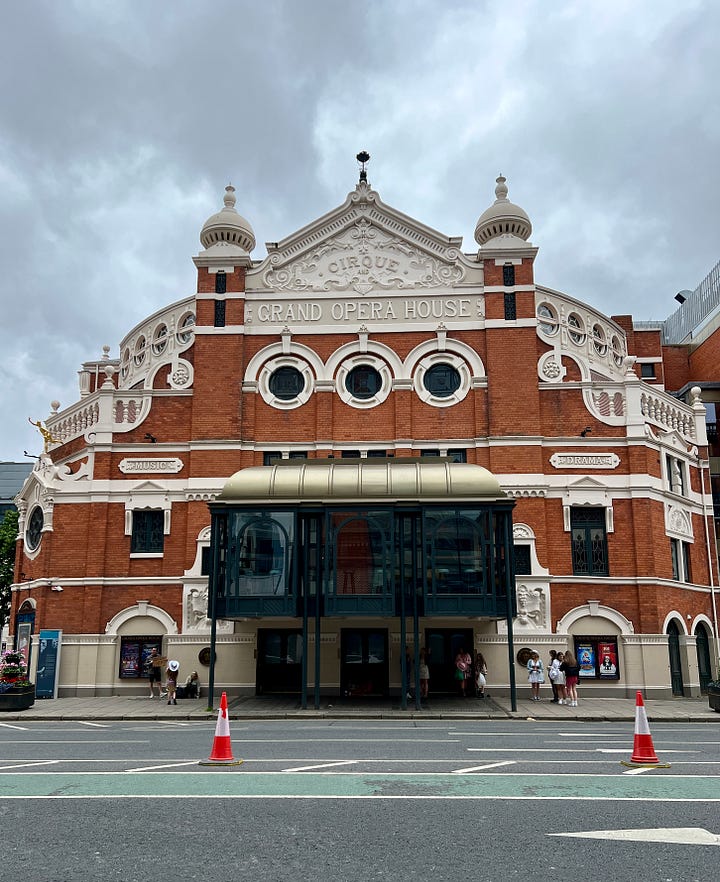
Greg: We're glad we did it.
Jen: Yes.
Greg: So, we began by taking a bus, which was just a couple of blocks from our hotel in Glasgow that literally drives onto a ferry.
Jen: I thought, you know, drive your car, you sit there, it's going to go for a little bit, but this is, like, almost a cruise ship. They had a little theatre you could watch a movie. They had snacks. You could sit in a lounge. It was neat.
Greg: Mmhmm. Yeah. Once the ferry arrives at the port in Belfast, you get back in the bus and it drives off the ferry. In our case, the bus station was basically around the block from our hotel.
Jen: And we spent one afternoon and a full day in Belfast.
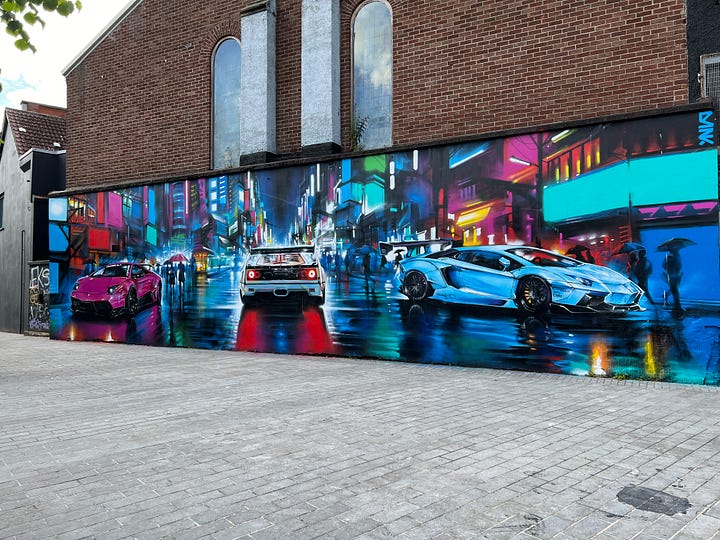
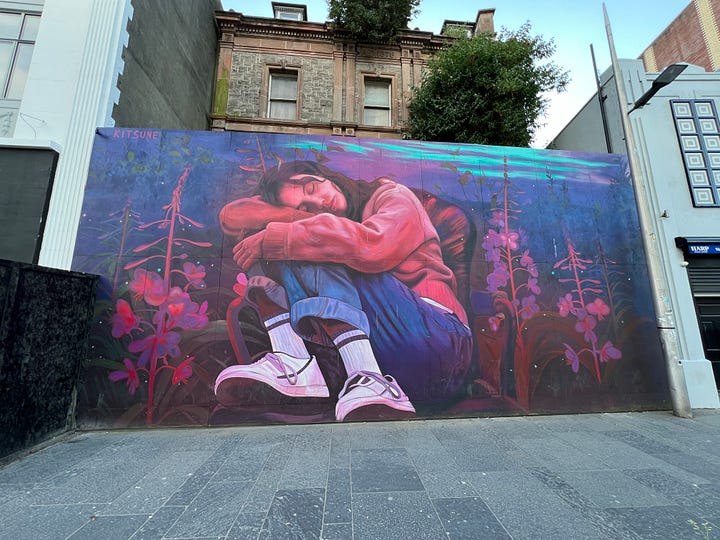
Greg: Right. One of the first things that we did was go to a restaurant called Mourne Seafood Bar.
Jen: So, we found out about this restaurant on a show we binge watched, pretty much, while we were in Scotland called “Come Dine With Me: The Professionals.” It's this cooking competition show. One of the restaurants featured on it was Mourne Seafood Bar. And we Googled it, we're like, “Where's this at?! Okay, we're going to Belfast!”
Greg: Right, yeah.
Jen: (laughs)
Greg: I don't want to say we went just because of this, but it was a catalyst.
Jen: And we were not disappointed. We took a look at the menu trying to figure out what we were going to get. It all looked delicious, but there was one starter that caught our eye ‘cause at this point, we are sorely missing Mexican food.
Greg: Yes.
And there was something on the menu called an avocado ceviche tostada. So, we're like, “Sweet. Let's get it.” We order it from the waitress and she goes, “Okay, well, let me just tell you, it doesn't have any seafood on it.”
We're like, “What!? You throw ceviche out there and you're not putting fish on it?” We got it anyway because it still sounded good and it was one of the best things we had that night, if not the best.
Greg: The flavors were probably the most authentic to Mexican cuisine that we've had since leaving the US.
Jen: Yeah.
Greg: So we went back to the hotel. That was pretty much the end of that first afternoon. The next morning we woke up and we went to the Titanic Museum.
Jen: Even though the Titanic sailed out of England, it was actually built in Belfast. And the museum is really informative and interactive and it tells you a little bit about the Titanic as well as the shipbuilding history of Belfast.
Greg: They really go over how the Titanic was built and a lot of the massive structures they had to create in order to build ships of that size. Plus, you got to see replicas of rooms like where the crew stayed or first-class cabins. There was a replica of the deck and the railing and it was really interesting to see all of that.
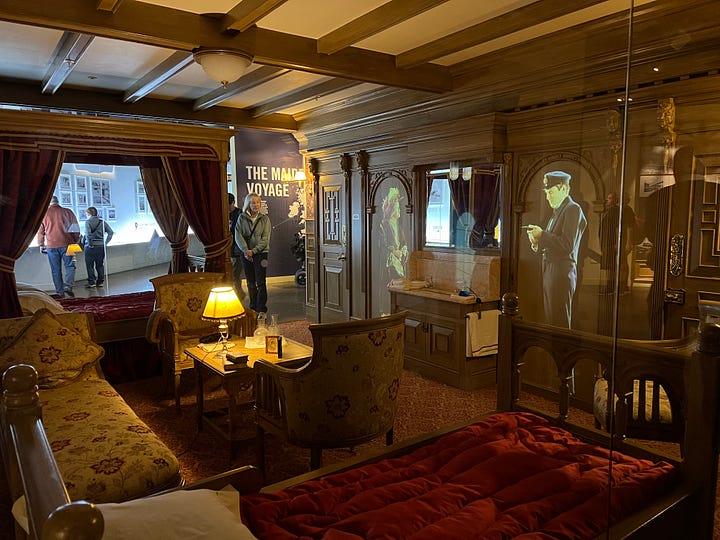

Jen: I think one of my favorite parts was this theme park-style ride that reminded me a lot of the Peter Pan one at Disney World where you get in this little car and it takes you on this little ride up and down two stories. And it shows you different scenes of a day of a laborer and shows you just what it was like for them when they built this ship.
Greg: From that ride, the museum has a complete shift because they begin covering the actual impact of the iceberg.
Jen: Yeah, it definitely took on a different tone completely from one room to the next. When you walked into that dark room with the messages of the SOS calls, there's a big wall with a list of everybody's name that was on the ship. Everybody was very somber for sure.
Greg: The museum starts to pick things back up a little bit from there. When they have displays, giving you pictures and stories of the significant figures whose actions during the events helped save lives. For example, the most notable one being, “The Unsinkable Molly Brown.”
Jen: Yeah, so if you're familiar with the Titanic movie, that's Kathy Bates' character.
Greg: (laughs) Yes.
As you get towards the end of the museum, they give you a section that is uplifting in a way. It went over all of the inquiries and government investigations and the subsequent improvements to maritime safety.
Jen: So from there, you walk down this hallway and it's this series of TV screens showing you a documentary of the team that found the wreckage of the Titanic. And surprisingly enough, this one museum didn't push you through a gift shop at the end.
Greg: It did not.
Jen: (laughs)
Greg: In fact, the very end of it is a big 20-, 30-foot-long replica of the Titanic that is made of a material so that when they light up different parts, it shows you different parts of the ship. And music is playing that kind of takes you back through the journey you just went on from the beginning of the museum to this point.
Jen: I think one of the coolest things about that room were all the artifacts that they had that were from the ship. There were some deck chairs, some of the clothing that they found, a life vest, and the neatest thing, I thought, was the violin that was from a band member that was made famous by the story of them playing while the ship sank.
Greg: Yeah.
Jen: So right outside of the Titanic Museum is a secondary museum of the Nomadic, which was the transport ship that was used to ferry passengers and mail from a port in Cherbourg to the Titanic. And the Nomadic is actually the last surviving ship of the White Star Line, which was the shipbuilding company that made the Titanic.
Greg: I thought it was a very interesting display. You know, not necessarily on the level of the rest of the museum, but it was cool.
Jen: I think it was a good morning spent.
Greg: Right!
From there, we caught a ride to St. George's Market, which is one of Belfast's oldest markets. It's in a very charming Victorian-era building, red brick. It was really pretty. And it's just a big part of their local community and culture.
Jen: The market had a really wide variety of stalls there, selling fresh produce, seafood, baked goods. And there were local artisans that had their crafts on sale. The market was really crowded because we went on a weekend, but I think that just added to its lively atmosphere and the fun of it all!
Greg: I agree! It was a little bit uncomfortable for me to be so tightly packed in in some areas weaving between people, but with the music and the smell from the foods that they had, everything inside of there really stimulating and —
Jen: A little sad though that we ate such a big breakfast, because there was a lot of stuff that we could have eaten, but we were just too full.
Greg: Yeah. Yeah…
Jen: Mistakes were made.
Greg: Exactly.
Jen: (laughs)
Greg: So that's pretty much what we did in Belfast. The next morning, we jumped on a bus and went to Dublin because that's where we had reserved a rental car so that we could begin driving to the area around the Cliffs of Moher.
Jen: Yeah, because all of the train travel like we had been doing before just wasn't going to be possible in Ireland. So we had to get a car.
Greg: Driving worked overall other than a few times where the roads are very narrow in rural Ireland, and I hit curbs at 30 to 45 miles an hour.
Jen: But it's really okay because we got the full coverage insurance, so we didn't have to pay for any damage.
Greg: Smart choice by us.
Jen: (laughs)
Greg: However, driving in Ireland was not all bad. There were several points that we just slowed down — or outright stopped — and stared.
Jen: It was just so pretty and so different than Scotland because I feel like Scotland was more “wild” and it felt more “untouched” by civilization. But Ireland had the charming little villages and you could definitely see that these areas had a more human touch throughout the years.
Greg: Right.
So eventually, we did get to our hotel in the area around the Cliffs of Moher. The next update is where we will talk about the Cliffs of Moher as well as our driving through Ireland back towards Dublin.
Jen: Yeah, I think the Cliffs of Moher gave us more stories than we were expecting.
Greg: Definitely. So…thanks for checking in.
Jen: And we'll see you at the next stop!




